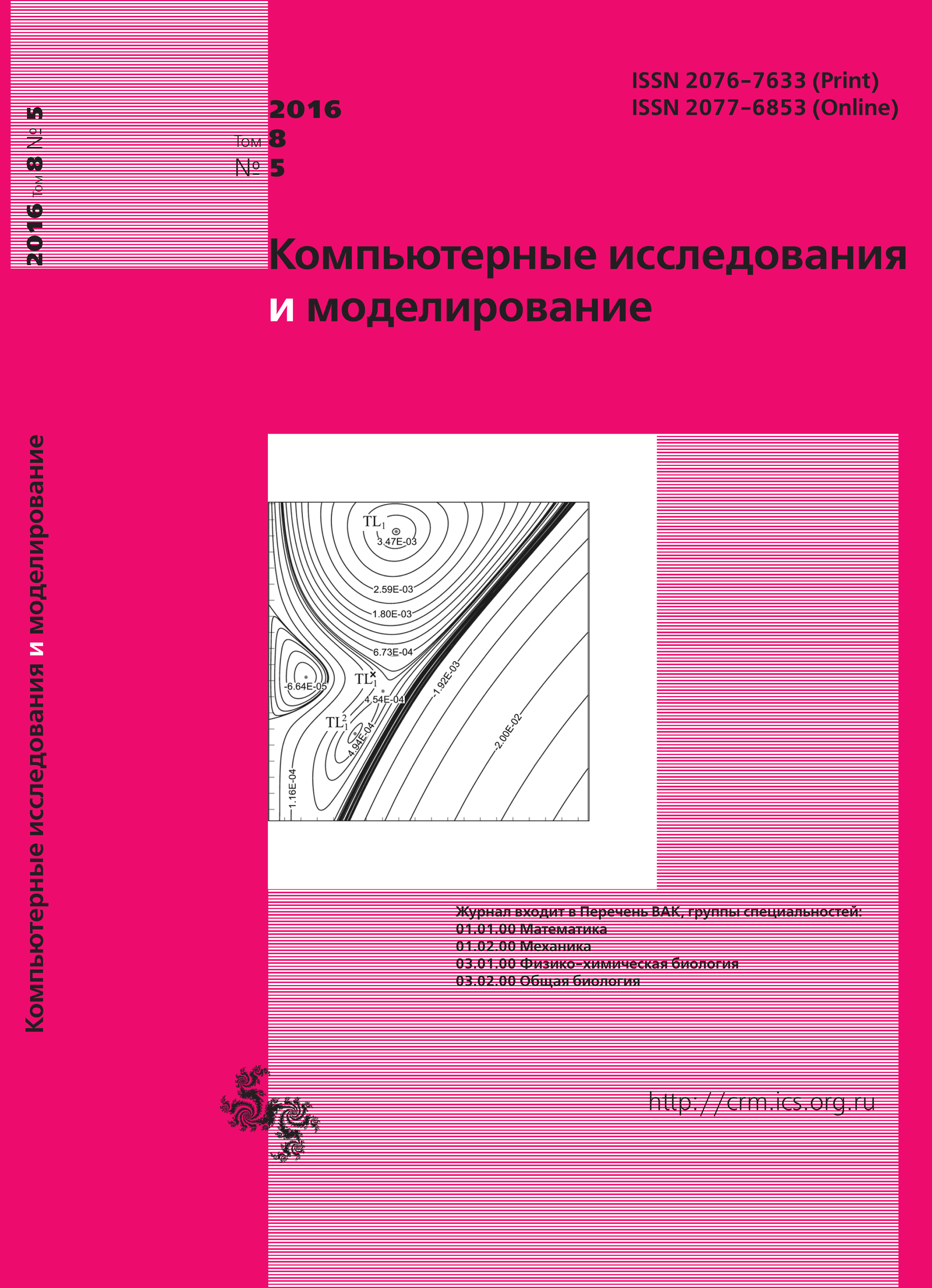All issues
- 2024 Vol. 16
- Issue 1 (special issue)
- 2023 Vol. 15
- 2022 Vol. 14
- 2021 Vol. 13
- 2020 Vol. 12
- 2019 Vol. 11
- 2018 Vol. 10
- 2017 Vol. 9
- 2016 Vol. 8
- 2015 Vol. 7
- 2014 Vol. 6
- 2013 Vol. 5
- 2012 Vol. 4
- 2011 Vol. 3
- 2010 Vol. 2
- 2009 Vol. 1
On the construction and properties of WENO schemes order five, seven, nine, eleven and thirteen. Part 1. Construction and stability
Currently, different nonlinear numerical schemes of the spatial approximation are used in numerical simulation of boundary value problems for hyperbolic systems of partial differential equations (e. g. gas dynamics equations, MHD, deformable rigid body, etc.). This is due to the need to improve the order of accuracy and perform simulation of discontinuous solutions that are often occurring in such systems. The need for non-linear schemes is followed from the barrier theorem of S. K. Godunov that states the impossibility of constructing a linear scheme for monotone approximation of such equations with approximation order two or greater. One of the most accurate non-linear type schemes are ENO (essentially non oscillating) and their modifications, including WENO (weighted, essentially non oscillating) scemes. The last received the most widespread, since the same stencil width has a higher order of approximation than the ENO scheme. The benefit of ENO and WENO schemes is the ability to maintain a high-order approximation to the areas of non-monotonic solutions. The main difficulty of the analysis of such schemes comes from the fact that they themselves are nonlinear and are used to approximate the nonlinear equations. In particular, the linear stability condition was obtained earlier only for WENO5 scheme (fifth-order approximation on smooth solutions) and it is a numerical one. In this paper we consider the problem of construction and stability for WENO5, WENO7, WENO9, WENO11, and WENO13 finite volume schemes for the Hopf equation. In the first part of this article we discuss WENO methods in general, and give the explicit expressions for the coefficients of the polynomial weights and linear combinations required to build these schemes. We prove a series of assertions that can make conclusions about the order of approximation depending on the type of local solutions. Stability analysis is carried out on the basis of the principle of frozen coefficients. The cases of a smooth and discontinuous behavior of solutions in the field of linearization with frozen coefficients on the faces of the final volume and spectra of the schemes are analyzed for these cases. We prove the linear stability conditions for a variety of Runge-Kutta methods applied to WENO schemes. As a result, our research provides guidance on choosing the best possible stability parameter, which has the smallest effect on the nonlinear properties of the schemes. The convergence of the schemes is followed from the analysis.
- . On the construction and properties of WENO schemes order five, seven, nine, eleven and thirteen. Part 2. Numerical examples. // Computer Research and Modeling. — 2016. — V. 8, no. 6. — P. 885. DOI: 10.20537/2076-7633-2016-8-6-885-910
Indexed in Scopus
Full-text version of the journal is also available on the web site of the scientific electronic library eLIBRARY.RU
The journal is included in the Russian Science Citation Index
The journal is included in the RSCI
International Interdisciplinary Conference "Mathematics. Computing. Education"







